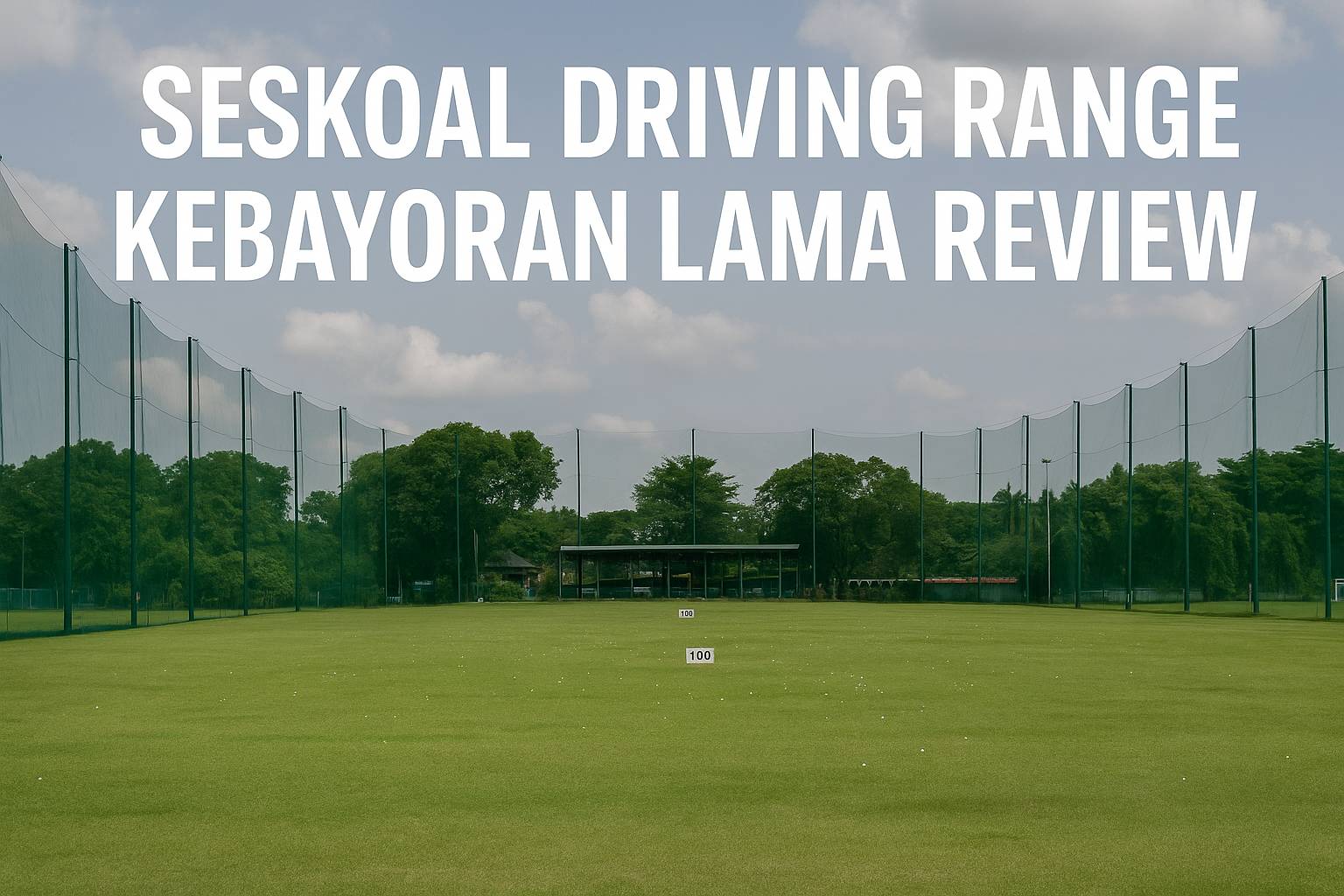A bunker in golf is more than a physical obstacle—it is a test of skill, strategy, and a player’s mental game. Confronting a bunker requires thorough knowledge of its types, structure, the governing rules, and the correct shot technique. With practice and experience, golfers can turn bunker challenges into chances to showcase expertise and trim strokes. Here is GoGolf’s in-depth guide.
What Exactly Is a Bunker?

A bunker is a depression on the course filled with sand, usually positioned along the fairway or near the green, designed to create strategic difficulty. Classified as a hazard—alongside water hazards—it imposes no extra penalty stroke, yet escaping the sand demands greater precision because the surface affects ball control. Course architects place bunkers for both aesthetic value and technical challenge.
In formal golf terminology, a bunker is a specially prepared area on the course filled with sand or similar material. Typically recessed below the level of the surrounding ground, bunkers serve both a practical and psychological purpose in the game’s architecture. They are explicitly classified under the Rules of Golf (by both the R&A and USGA) as hazards—similar in regulatory treatment to water hazards, though distinct in execution.
A bunker may appear along the fairway, tempting players into risky drives, or near the green, where it becomes an intimidating final defense against low scoring. Unlike water hazards, bunkers do not automatically impose penalty strokes for finding them. Instead, the “penalty” is more nuanced: the golfer must execute a much more challenging recovery shot from an unstable surface that resists clean contact and complicates spin control.
Strategically, bunkers are used by course designers to shape how a hole should be played. By carefully positioning these sand-filled depressions, architects influence players’ shot selections, encouraging them to weigh distance against direction and risk versus safety. For example, a well-placed fairway bunker at 250 yards off the tee might prompt a cautious three-wood instead of a driver, while a greenside bunker tucked near a pin placement can force a conservative play to the heart of the green rather than a direct attack.
Additionally, bunkers enhance a course’s aesthetic value. The contrast of pale sand against lush fairways and dark rough is visually striking, offering the dual allure of beauty and danger. From the perspective of course management, they also help define mowing lines and direct maintenance patterns, subtly guiding foot and cart traffic.
Thus, far beyond being mere sandy pits, bunkers stand as integral elements of golf course strategy, influencing not only the physical route to the hole but also the mental and emotional dynamics of play.
Purposes and Functions of a Bunker
More Than Sand: How Bunkers Shape the Game’s Physical and Mental Landscape
The primary function of a bunker is to elevate the strategic complexity of a golf course. By introducing targeted risk, bunkers transform straightforward holes into multidimensional tests of skill. Each type of bunker placement compels golfers to carefully evaluate not only their current shot but how it will impact their subsequent position.
1. Testing Strategy and Accuracy
Perhaps the most fundamental role bunkers play is in forcing strategic thinking. Players must plan their lines off the tee or their approaches to the green with bunker locations firmly in mind. Choosing the right club, determining how aggressively to pursue distance, and deciding whether to attack a tight pin near a bunker or play safely to the center—all these considerations revolve around avoiding these hazards.
This interplay enhances the course’s replay value. A hole with well-placed bunkers never plays exactly the same way twice, especially under changing wind or pin conditions.
2. Refining Technique and Requiring Specialized Skills
Bunkers also act as a litmus test for technical skill. Recovering from the sand is unlike striking from turf. It requires unique shot mechanics, including an open clubface, a swing that intentionally hits the sand before the ball, and the finesse to control how far the ball and accompanying sand fly. As such, consistent success from bunkers is often what separates advanced players from novices.
3. Introducing Psychological Pressure
On the mental side, bunkers can dramatically influence confidence. Seeing a deep greenside trap or a fairway bunker precisely in one’s landing zone increases tension, which may cause an otherwise smooth swing to become tentative or overly forceful. The mere presence of bunkers can thus shape outcomes long before the ball is actually struck.
4. Driving Tactical Decisions Once Inside
Finally, after a shot finds a bunker, the player faces fresh strategic dilemmas: opt for a safe splash back to the fairway, or attempt a longer, riskier shot that could reach the green but may also fail spectacularly? These decisions inject each round with moments of drama and require clear-headed assessment under pressure.
Through all these dimensions—strategic, technical, psychological—bunkers fulfill their essential role: challenging players to blend mental acuity with physical precision in pursuit of the lowest possible score.
Common Bunker Types
| Type | Location & Role | Key Challenges |
|---|---|---|
| Fairway Bunker | Along the fairway, often at tee-shot range | Cuts distance; complicates direction; forces tough lay-up vs. bold carry decisions |
| Greenside Bunker | Nestled beside the green | Demands soft, high, accurate shots; varies with sand firmness |
| Waste Bunker | Expansive natural sand, not an official hazard | Touching sand before swing allowed; terrain can be mix of sand, stones, vegetation—requires flexible technique |
A Breakdown by Location and Tactical Role
While all bunkers share the trait of being hazards filled with sand, they are not uniform. The placement and intended challenge of each type introduces distinct playing considerations.
Fairway Bunkers
Definition & Role: Located alongside or within the fairway, often in typical landing zones for tee shots or long approaches.
Strategic Impact: These bunkers force players to make decisions even before their drives. Should they attempt to carry the bunker with a powerful shot, lay up short, or shape the ball around it? Once in a fairway bunker, golfers face awkward lies that can curtail their ability to reach the green in regulation. Clean contact becomes harder, and longer clubs may be impractical due to lip height or lie quality.
Greenside Bunkers
Definition & Role: Found near the putting surface, often hugging pin placements to protect direct approaches.
Strategic Impact: These bunkers are designed to penalize slightly off-target approach shots. Escaping requires high, soft-landing shots—typically with a sand wedge—that stop quickly on the green. The firmness and grain size of the sand, the height of the bunker’s lip, and the slope of the green beyond all combine to intensify the challenge.
Waste Bunkers
Definition & Role: Large natural sandy areas that resemble traditional bunkers but are technically not classified as hazards.
Strategic Impact: Unlike official bunkers, waste areas allow grounding the club or taking practice swings that touch the sand. However, they often feature irregular terrain, rocks, or sparse vegetation, demanding creative shot-making and careful club selection. They still punish mishits, making them tactically influential despite different rule applications.
By understanding these bunker types, golfers can approach each with tailored strategies, choosing whether to confront or circumvent the challenge based on skill, confidence, and course conditions.
Bunker Characteristics
Not all bunkers are created equal. Several specific characteristics determine how formidable a particular bunker will be and how a player must adapt to escape effectively.
Sand Composition
The type of sand used—whether bright white, earthy brown, or gray—affects shot outcomes. Coarse-grain sand tends to produce more explosive shots with less control, while finer grains can allow more delicate manipulation. Moisture content also plays a huge role; damp sand is heavier and limits how far the ball travels.
Depth and Shape
Bunkers range from wide, shallow pans that pose primarily psychological threats to deep pot bunkers with vertical walls that almost guarantee a penalty stroke in skill if not in count. Steeper bunkers compel players to adopt exaggeratedly lofted swings to clear the lip.
Lip Height
This is one of the most intimidating aspects. A bunker with a high, sharp lip near the target forces golfers to fly the ball almost straight up, reducing distance dramatically. Knowing the height relative to the pin and one’s lie is crucial in choosing the right shot.
Drainage Systems
Modern bunkers incorporate intricate drainage beneath the sand to keep them playable even after heavy rain. Without this, water pooling would render bunkers unplayable or inconsistent, undermining their strategic purpose.
Well-crafted bunkers combine these elements to blend aesthetically with the course while posing meaningful challenges that elevate the sophistication of the game.
Basic Rules in Bunkers
Navigating bunkers is governed by clear principles to maintain fairness and uphold the game’s integrity.
- No Grounding the Club: Before taking the stroke, players must not let their club touch the sand, whether on practice swings or address. This rule preserves the hazard’s challenge by preventing testing of the surface.
- No Altering Conditions: It is also prohibited to smooth or remove loose sand near the ball to improve a lie or line of play before a shot.
- Restoring Conditions: After playing from a bunker, golfers should rake the sand to remove footprints and divots, preserving consistent playing conditions for following groups.
Breaching these rules can result in penalty strokes (under R&A/USGA rules), emphasizing how bunkers test not only skill but also a player’s respect for the traditions and spirit of the game.
Bunker Structure at a Glance
- Filled with white or brown sand.
- Variable depth and width.
- Surrounded by a lip that may be shallow or steep.
Core Technique for a Bunker Shot
Escaping a bunker is about technique, confidence, and trust in fundamental mechanics.
- Stance: Begin by digging feet slightly into the sand to establish a stable base. A wider-than-shoulder stance promotes balance on an inherently unstable surface.
- Club and Grip: The sand wedge, with its high loft and bounce, is designed specifically for bunker play. Grip the club lightly to maintain feel and allow the clubhead to glide through the sand.
- Swing and Impact: The goal is not to strike the ball directly. Instead, take a steeper swing and enter the sand an inch or two behind the ball, letting the club slide under to lift both sand and ball out together.
- Follow-Through: A committed follow-through is critical. Stopping the swing short or decelerating often traps the ball in the bunker’s face.
When practiced regularly, these techniques transform bunker play from a daunting hazard into an opportunity to save par or even pull off highlight-reel recoveries.
[ Follow our social media Account: GoGolf Instagram | GoGolf Facebook | GoGolf X ]











